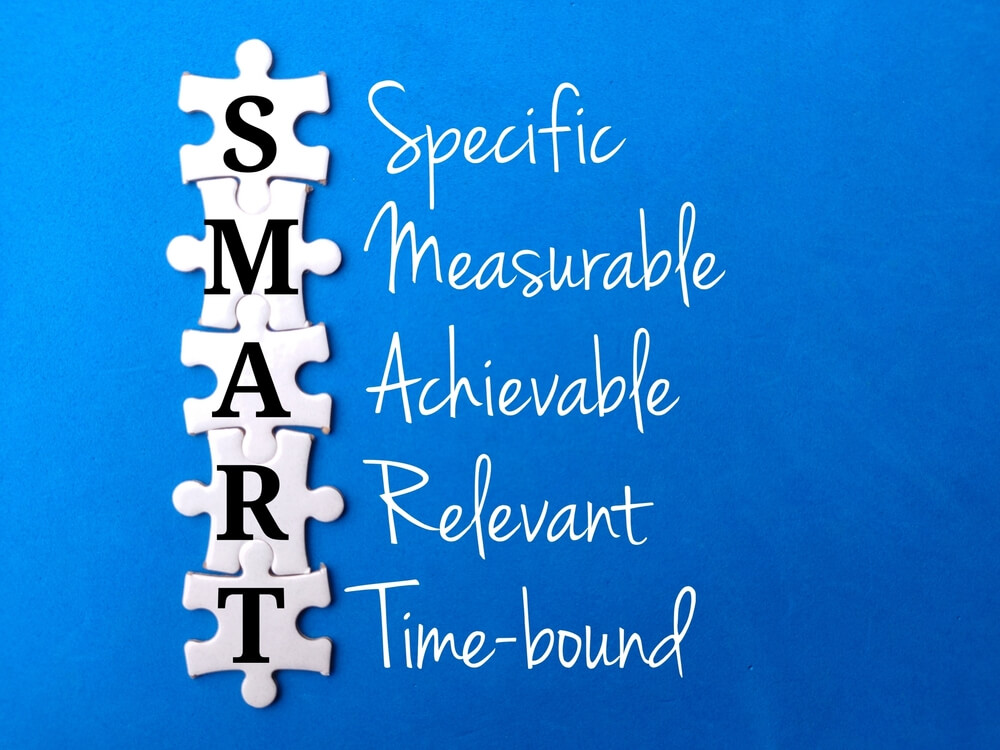
Finding the Best Way To Work With Your Fractional CMO
Businesses working with a fractional chief marketing officer benefit from strategic expertise and excellent management skills. Despite having an in-house team, large companies need the experience and efficiency of a fractional chief marketing officer. However, how does an in-house marketing team work with a fractional chief marketing officer (FCMO)?
This guide explains the best way to work with a CMO consultant.
- Assess current marketing
- Create clear goals
- Allocate resources
- Execute marketing campaigns
- Improve continuously
- Develop an exit strategy
With these steps, an in-house team can work harmoniously with an FCMO. Let’s go!
Wondering what a Fractional CMO can do for your business? Watch this video below.
Assess Current Marketing
Businesses must assess their company's current marketing situation before considering a fractional CMO. Assessment includes understanding their marketing goals and identifying areas in their strategies that need improvement.
Assessments should include the in-house team, as they have a deeper knowledge and understanding of the company's marketing needs. From their evaluation, they can define clear and achievable goals and the key performance indicators (KPIs) to check the achievement of these goals. Here are some marketing assessment best practices:
- Collect data on marketing metrics, including conversion rates, website traffic, sales revenue, customer acquisition costs, and return on investment (ROI).
- Use Google Analytics, marketing automation tools, and social media insights to gather data.
- Analyze customer segments and buyer personas to determine if the marketing strategies target the ideal customers.
- Identify significant changes in customer behavior, demographics, and buying preferences.
- Perform competitive analysis to understand how competitors are performing in the market.
- Check content marketing performance. Include blog posts, email marketing campaigns, website content, and social media.
- Evaluate online presence, including website user experience, search engine optimization (SEO), and mobile friendliness.
- Gather feedback from customers using reviews, surveys, and direct communication.
- Assess tools and technologies for campaign management, data analysis, and marketing automation.
- Analyze marketing budgets and resource allocation to ensure effective investments in channels and campaigns.
Create Clear Goals

Do you need a fractional CMO? Establish your marketing goals before working with an FCMO. Like any other professional, a consultant requires a goal to know what they are working on and to ensure success. Clear goals help FCMOs understand the company's needs and efficiently use marketing budgets and time.
Having clear goals ensures focus on the business' marketing priorities. It follows the SMART rule: specific, measurable, achievable, relevant, and time-bound. Here are examples of well-defined marketing goals:
- Increase brand awareness by 20% among the target audience within the following year.
- Generate 1,000 new leads per month using inbound marketing strategies.
- Increase customer retention rates by 10% over the next two quarters.
- Boost website traffic by 20% within six months.
- Achieve an average engagement rate of 10% on social media posts within six months.
- Increase monthly sales revenue by 25% by the end of the fiscal year.
- Decrease customer acquisition costs by 20% in the next quarter.
- Increase email open rates by 25% and click-through rates by 15% in the next quarter.
- Achieve 500 pre-orders for a new product launch campaign.
These examples consider a wide range of marketing campaigns and objectives. When creating marketing goals, ensure they match the business's needs and priorities. Use the SMART criteria for efficient and successful goal setting.
Allocate Resources
One of the tasks of fractional CMOs is helping with resource allocation, including budget, personnel, and tools. With effective resource allocation, the marketing team can efficiently and effectively execute marketing strategies and campaigns.
Businesses work with FCMOs to identify skill gaps in their in-house teams. CMO consultants suggest additional training and tools or hire an expert to help remedy these gaps. Companies need to provide the FCMO access to historical and recent data to help make sound resource allocation recommendations. Using past data, an FCMO can create the most appropriate and timely recommendations for the business’ marketing efforts.
Execute Marketing Campaigns

An in-house marketing team works with the FCMO to execute campaigns. A fractional CMO focuses on high-level strategy and decision-making, while an in-house team handles the day-to-day execution of marketing campaigns. An in-house team also works on content creation, advertising, and other tactical activities.
The fractional CMO and the in-house team monitor the progress of marketing campaigns and initiatives. They use data and analytics to track key performance indicators to assess the performance of various strategies and tactics. They identify areas that require optimization based on real-time data.
The FCMO prepares regular reports for senior management or stakeholders. These reports summarize the performance of marketing efforts, progress toward goals, and recommended adjustments. This partnership allows for scalability, while the in-house team can expand or contract according to the demands of specific campaigns.
The two must have regular, open communication to ensure everyone is on the same page and that the strategy is executed effectively. Here are more strategies to help the marketing team work more efficiently with an FCMO:
- Ensure that in-house team members can contact the FCMO for guidance.
- Encourage cross-functional collaboration with other departments, including sales, product development, and customer support.
- Embrace agile methodologies for enhanced flexibility and adaptation. It includes self-organization, cross-functional work, and continuous feedback.
- Create a shared marketing plan or roadmap. This outlines the campaign's or initiative's goals, strategies, and timelines.
Improve Continuously
The fractional CMO and the in-house team must seek opportunities for continuous improvement. They adapt strategies based on the insights they gain from data analysis and market changes. The two conduct regular meetings, workshops, and brainstorming sessions to create a collaborative environment.
The fractional CMO provides mentoring and training to help the in-house staff develop their marketing skills and stay updated on industry trends.
Develop an Exit Strategy

Most fractional CMO services have a defined timeline, which calls for a clear exit strategy. Part of this exit strategy is knowledge transfer and ensuring the in-house team can continue to effectively handle marketing efforts.
The company must evaluate the FCMO's services to determine how well the FCMO has met their obligations. The company considers past and current marketing campaigns and identifies if the marketing goals were completed using the set KPIs for the campaign. The FCMO submits reports to all stakeholders addressing all these concerns.
If the business goal was to increase sales by a specific percentage in the year's first two quarters, this expected growth should be reflected in their report. If an FCMO has not achieved the desired outcome, they recommend strategies to continue or modify existing campaigns.
Summing Up
Collaboration between the in-house team and the fractional CMO should be based on clear communication and mutual respect. They must have a shared commitment to achieving the organization's marketing goals. This partnership leverages the strengths of both sides to drive marketing success.
Do you want to know more about how an FCMO can help you with your business? Contact Digital Authority Partners for the latest in CMO consultant services today.
Want To Meet Our Expert Team?
Book a meeting directly here




